The post Planet Fitness Targets New Members with Strength Equipment appeared first on Athletech News.
]]>Planet Fitness has committed to becoming the top fitness operator for the most dedicated gym-goers and is already delivering on its promise.
The fitness giant has kicked off a limited-time offer just in time for New Year’s resolutions and plans to continue adding new plate-loaded strength equipment to nearly all U.S. locations in 2025, driven by the rising interest in strength training.
The new strength-focused equipment — which includes the Magnum Supine Bench Press, Hack Squat and Seated Calf Machine — has already been added to more than 1,700 Planet Fitness clubs.
“Consumers are seeking more options for strength training as their fitness needs evolve, and Planet Fitness is a place where everyone can get strong and achieve their goals in the New Year,” Planet Fitness chief brand officer Jamie Medeiros said. “We offer a high-value fitness experience, with a wide variety of both strength and cardio equipment, ensuring everyone can work out their way.”
In addition to its equipment initiatives, new Planet Fitness CEO Colleen Keating outlined a broader marketing strategy for the fitness franchisor on a call with investors last month.

“We’re beginning the shift to communicating the high value of a Planet Fitness membership versus primarily focusing on our low price and using our marketing to demonstrate the breadth of high-quality top-tier equipment in our club,” Keating said.
Prospective Planet Fitness members can now sign up at any U.S. location through January 10 for just $1 down and $15 per month, with the flexibility to cancel at any time.
“We encourage everyone to take advantage of our limited-time membership offer and join our inspiring and supportive fitness community where everyone can grow stronger together,” Medeiros continued.
While the high-value, low-priced operator’s new join offer gets underway, Planet Fitness is gearing up to celebrate its tenth year as presenting sponsor of the Times Square New Year’s Eve celebration and is headed into 2025 with a strong start, according to analysts.
The post Planet Fitness Targets New Members with Strength Equipment appeared first on Athletech News.
]]>The post Planet Fitness Invests in Future with $1M+ to Boys & Girls Clubs appeared first on Athletech News.
]]>Planet Fitness is reflecting on its impactful contributions in 2024, including donating over $1 million to the Boys & Girls Clubs of America and awarding 50 teens $50,000 scholarships for promoting inclusion and kindness within their communities.
Since 2016, the low-cost, high-value gym giant has contributed more than $10.5 million to the national organization as part of its initiative to promote youth well-being. The fitness franchisor’s philanthropic efforts have led to the launch of nearly 50 “Mini Judgement Free Zones” in select Boys & Girls clubs across the U.S., offering safe and inclusive spaces for teens to exercise. Additional sites are in the works for 2025, according to Planet Fitness.
“At Planet Fitness, our commitment to Boys & Girls Clubs of America goes back to our brand purpose and commitment to ensuring everyone feels welcomed and supported both in our clubs and our communities,” Planet Fitness chief corporate affairs officer McCall Gosselin said. “As we approach the 10th anniversary of our Judgement Free Generation initiative, we are extremely appreciative of the generosity of our members, team members, and franchisees. Their contributions ensure that we can continue to empower the next generation to prioritize both their mental and physical health and promote kindness and inclusion in their daily lives.”
Planet Fitness also raised additional funds for Boys & Girls Clubs through online donations during new member registrations and has funded social-emotional skills training for Boys & Girls Club professionals and youth.
“As one of the nation’s largest youth-serving organizations, Boys & Girls Clubs of America is committed to providing young people with the tools and resources they need to build healthy physical and mental habits,” said Chad Hartman, national vice president of corporate partnerships and engagements. “Thanks to the dedication of Planet Fitness, not only do more youth have access to fitness resources in their local Boys & Girls Clubs, but they are promoting acts of kindness and acceptance among their generation in communities nationwide.”
The popular fitness chain is set to celebrate its tenth year as presenting sponsor of the Times Square New Year’s Eve celebration, where a sea of attendees will sport Planet Fitness New Year’s Eve party hats with touches of its signature purple color theme.

“Our New Year’s Eve sponsorship puts fitness top of mind in the new year and reminds everyone to put their health and fitness goals first in 2025,” Planet Fitness chief brand officer Jamie Medeiros said. “No matter what your goals are or what strength looks like to you, all fitness levels can start 2025 strong at Planet Fitness.”
Ahead of what’s anticipated to be a strong year for the gym giant, Planet Fitness is scheduled to participate in an upcoming investor conference on January 13, 2025.
The post Planet Fitness Invests in Future with $1M+ to Boys & Girls Clubs appeared first on Athletech News.
]]>The post The Fitness & Wellness Moves That Defined 2024 appeared first on Athletech News.
]]>The fitness and wellness industry is starting to settle into a post-pandemic rhythm, marked by people returning to gyms and studios in large numbers, a rising interest in longevity services and the surging popularity of modalities like strength training and Pilates.
This past year saw plenty of headlines, from major mergers to big-name brands filing for bankruptcy to CEO changes at the industry’s top companies.
Athletech News recaps the eight fitness and wellness moves that defined 2024, and forecasts what each could mean as we enter a new year.
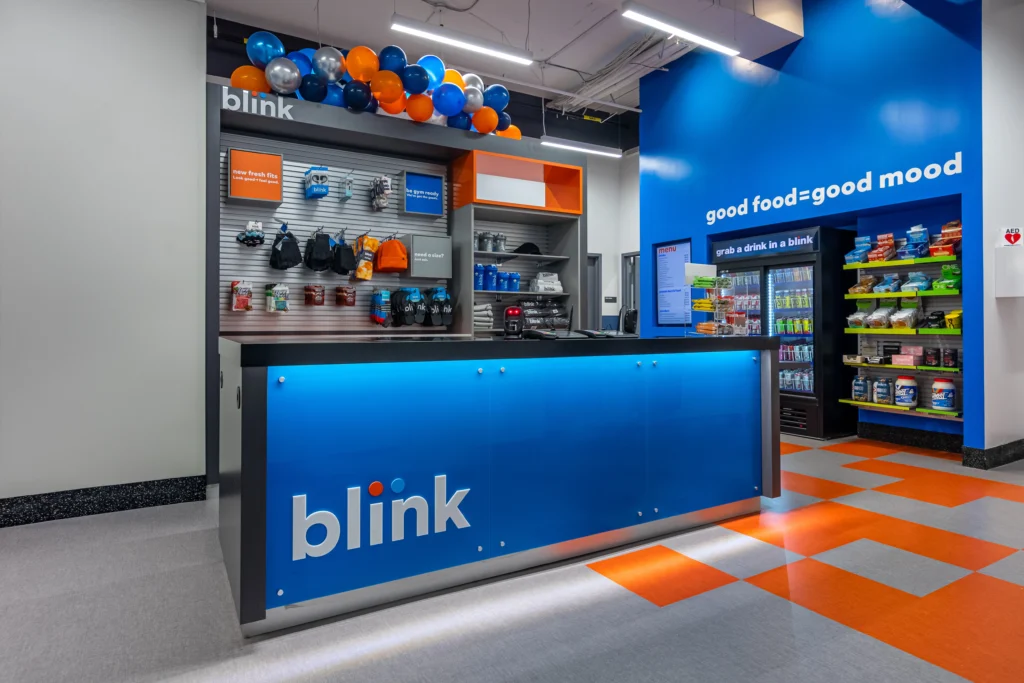
credit: Blink Fitness 8. PureGym Acquires Blink Fitness Gyms, Eyes US Takeover
PureGym, a leading U.K. gym operator, acquired most of Blink Fitness’ assets in a $121 million deal in December, which came after Blink filed for 11 bankruptcy. The deal will see 67 New York, New Jersey, and Pennsylvania-area Blink gyms rebranded under the PureGym banner in 2025.
The U.K. gym brand fended off competition from Planet Fitness, which made an unsuccessful last-minute bid to acquire the Blink gyms amid bankruptcy proceedings
Why It Matters:
PureGym is looking to establish a foothold in the U.S. market, and acquiring Blink’s East Coast gyms gives it just that. Blink also has around 30 gyms in California, Illinois, Massachusetts and Texas, and says it’s still evaluating offers for those locations.
What To Watch in 2025:
The U.S. market for low-price gyms is highly crowded and competitive, but Blink has carved out an impressive niche in the coveted New York metro area. PureGym will look to maintain Blink’s strong ties in the area while transitioning those gyms under its own branding.

credit: Oura 7. Oura Valued at $5.2B as Smart Ring Wars Begin
Oura is fortifying its position as the leader in the burgeoning smart ring space, but the Finnish brand has some serious competition. Oura just completed a $200 million Series D funding round, raising the smart ring maker’s valuation to $5.2 billion. The new funding comes as Oura looks to make healthcare features like continuous glucose monitoring (CGM) a key part of its strategy moving forward.
Why It Matters:
Oura’s valuation is noteworthy in its own right, but it’s especially important as the company looks to fend off competition from Samsung, which recently entered the smart ring space with its Galaxy Ring, and Ultrahuman, an India-based smart ring maker that raised $35 million earlier this year.
What To Watch in 2025:
As wearable technology becomes a bigger part of fitness, wellness and potentially healthcare, the smart ring wars will be worth monitoring. Is Oura’s tech too advanced for Samsung and Ultrahuman to catch up, or can those brands encroach on the Finnish brand’s turf?
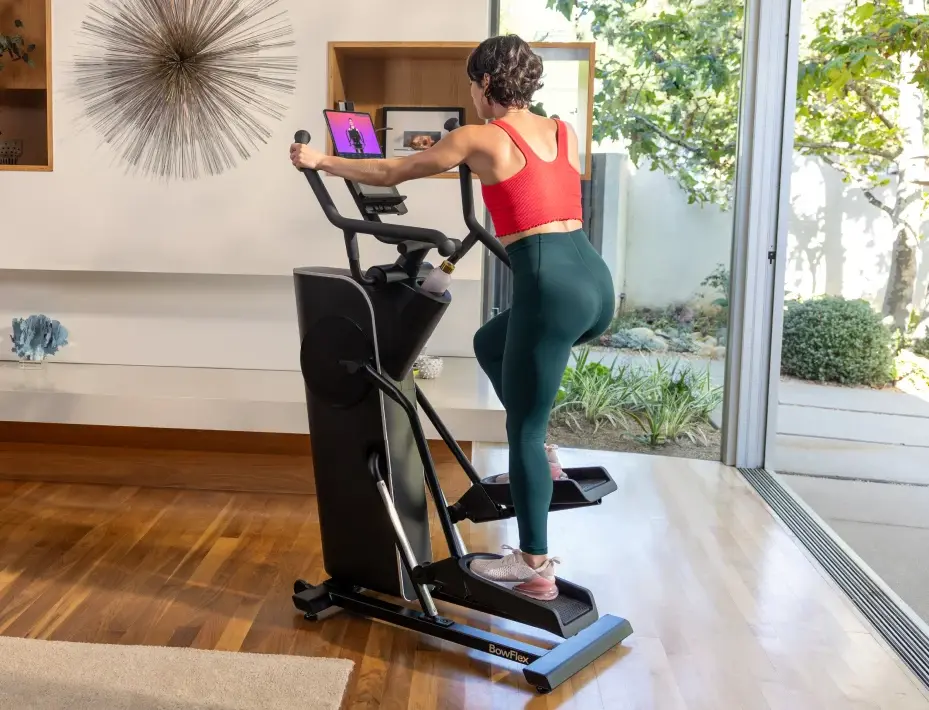
credit: BowFlex 6. BowFlex Goes Bankrupt, Gets Acquired by Matrix Parent
BowFlex filed for bankruptcy in March, but the at-home fitness equipment brand was quickly gobbled up by Johnson Health Tech Retail, the parent company of Matrix Fitness. Johnson Health Tech acquired BowFlex in a deal worth $37.5 million, and now sells BowFlex equipment alongside its other brands including Matrix, Vision Fitness, Schwinn and Horizon Fitness.
Why It Matters:
For all of BowFlex’s struggles over the past few years, the name still carries some weight among fitness consumers thanks to its 2000s-era glory days. For Johnson Health Tech, having both Matrix and BowFlex in its arsenal gives the Taiwan-based company a powerful one-two punch in the commercial and at-home fitness equipment markets, respectively.
What To Watch in 2025:
It will be interesting to see whether Johnson invests major resources into resuscitating BowFlex, or whether the once-proud brand becomes a bit player in the Taiwanese company’s larger portfolio.

Peloton instructor Kendall Toole (l) announced her departure in June (credit: @kendalltoole/Instagram) 5. Peloton Deals With Instructor Exits, CEO Change
This roundup wouldn’t be complete without mentioning Peloton, the connected fitness giant that’s fallen on some hard times but still enjoys a cult-like following among its 3 million or so paid subscribers.
This spring and summer, Peloton dealt with the exit of CEO Barry McCarthy, a new round of layoffs and the highly publicized departures of three popular instructors – Kristin McGee, Kendall Toole and Ross Rayburn.
Apple+ co-founder Peter Stern took over as Peloton’s new CEO in October, bringing his expertise in digital subscription businesses to the connected fitness company as it looks to grow its paid subscriber base and become less reliant on hardware sales.
Why It Matters:
Whether right or wrong, Peloton still serves as a proxy for the entire connected fitness industry, which has struggled to find its footing in a post-pandemic world where people workout inside gyms and at home. Peloton’s financial struggles will be tough to overcome, but Stern is a hopeful appointment given his background at Apple and Time Warner Cable.
What To Watch in 2025:
Peloton is trying hard to win over general fitness enthusiasts, recently releasing a strength training app and launching a campaign led by the NFL’s Watt brothers designed to appeal to Millennial males. The connected fitness giant doesn’t want to be just a bike company, a mission it struggled to make good on in 2024. Will 2025 be the year Peloton becomes known for digital fitness content instead of just cycling?
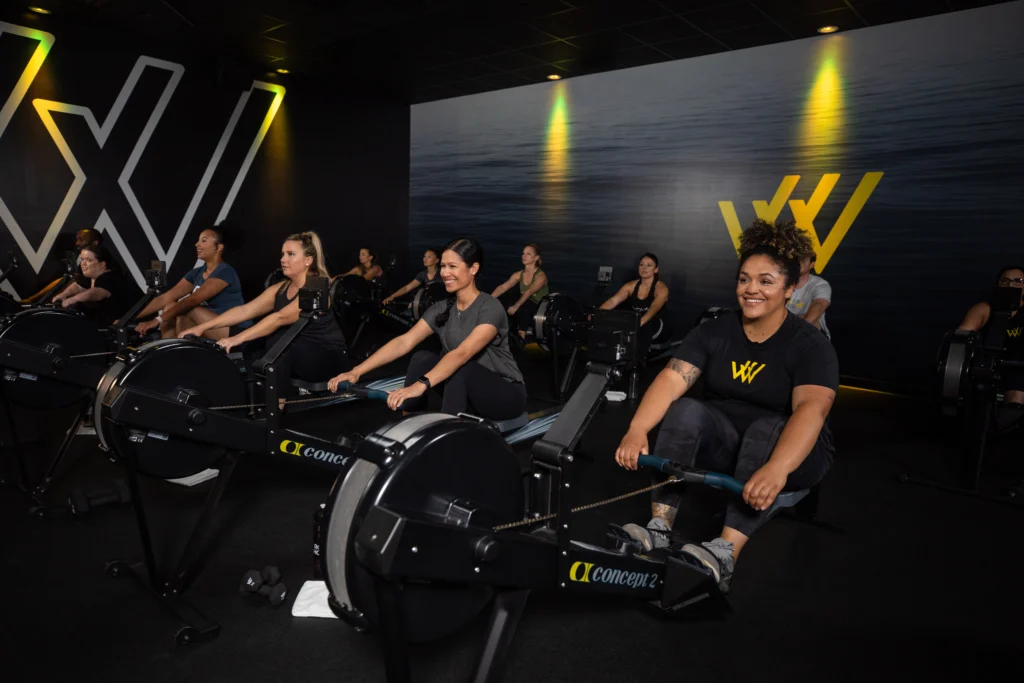
Xponential divested from Row House in 2024 (credit: Xponential Fitness) 4. Xponential Makes CEO Change, Sells Boutique Fitness Brands
Anthony Geisler, who founded Xponential Fitness in 2017 and grew it into the world’s largest franchisor of boutique fitness and wellness brands via acquisitions, was dismissed as the brand’s CEO in May. The stunning news came after Xponential received notice of an investigation by the United States Attorney’s Office for the Central District of California. Other executive leaders have left Xponential in 2024, most notably Sarah Luna, who had served as the company’s president since 2021.
To replace Geisler, Xponential hired former Taco Bell chief Mark King as its new CEO. The Irvine, California-based company has also brought on new executive talent including Bob Kaufman as president of international and Duncan Cork, a former F45 Training exec.
Besides executive upheaval, Xponential divested from two brands in 2024, selling Stride Fitness and Row House while also “winding down” its affiliation with AKT. Xponential’s portfolio now consists of eight brands – BFT, Club Pilates, CycleBar, Lindora, Pure Barre, Rumble Boxing, StretchLab and YogaSix.
Why It Matters:
Xponential enters 2025 with a radically different executive leadership team from the one it had at the beginning of 2024. It’s unclear how the new-look Xponential will differ from the old guard, but King brings high-level franchising experience from Taco Bell.
What To Watch in 2025:
Will Xponential sell any more brands? The franchisor has hinted that it wants to devote more attention to its top-performing brands like Club Pilates and StretchLab while also looking to grow trendy concepts like BFT and Lindora. As a result, other brands could be on the chopping block. It’s also possible that Xponential looks to re-grow its portfolio with another acquisition in the coming year. Additionally, King has stated that Xponential plans to ramp up its international expansion efforts in 2025.

Credit: Orangetheory Fitness 3. Orangetheory, Anytime Fitness Create a Superpower
Orangetheory Fitness and Anytime Fitness parent Self Esteem Brands completed a merger of equals transaction in April, creating one of the world’s largest fitness and wellness brands with around 7,000 global franchise locations and $3.5 billion in systemwide sales.
A new holding company, Purpose Brands, will oversee Orangetheory, Anytime Fitness and other fitness brands in the portfolio, with former Topgolf CEO Tom Leverton tapped to lead the new entity.
Why It Matters:
With the one-two punch of Orangetheory and Anytime, Purpose Brands instantly becomes one of the most powerful global fitness brands. While OTF and Anytime will retain their own identities, the brands will lean on each other for franchising support, data and technology integration and other strategic initiatives. In the era of AI, having access to that much data should give Purpose Brands an advantage over other fitness brands.
What To Watch in 2025:
Orangetheory has already begun to adjust its strategy following the merger. The iconic group fitness group brand just launched a new ad campaign and is eyeing a broader rebranding strategy that includes a refreshed color palette, new digital designs and in-studio changes, all of which are designed to align OTF with post-pandemic wellness trends.
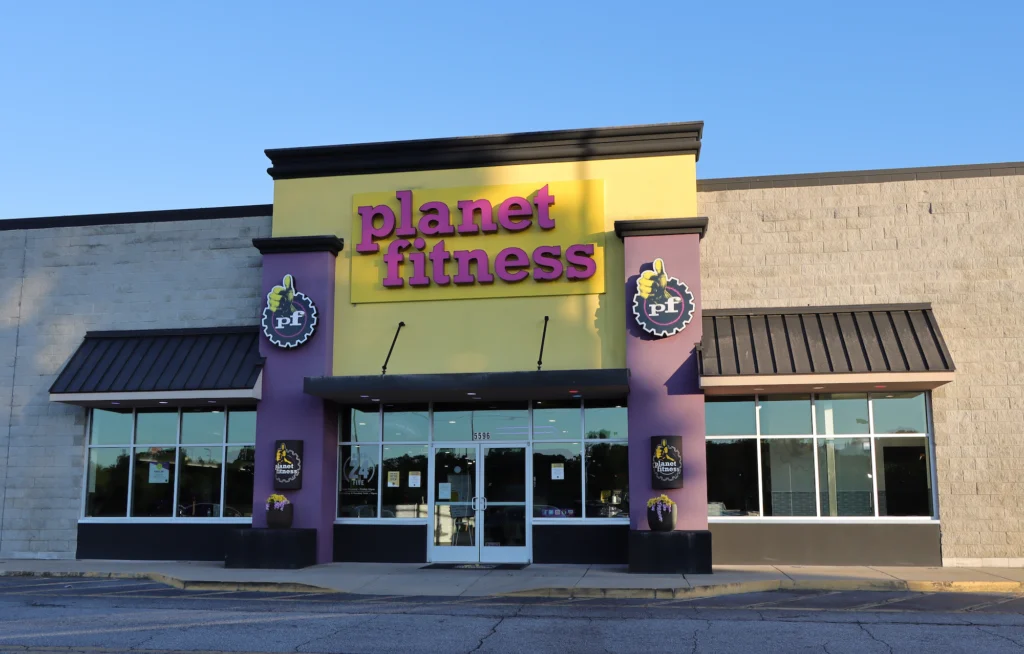
credit: Deutschlandreform/shutterstock.com 2. Planet Fitness Raises Membership Price, Hires New CEO
It was quite the year for Planet Fitness, with the high-value, low-price (HVLP) gym giant raising its base membership price from $10 to $15/month and naming Colleen Keating as its new CEO to replace Chris Rondeau, whose exit shocked the fitness world in 2023.
Planet Fitness’ decision to raise its Class Card price to $15/month marked the gym brand’s first membership price increase in nearly 30 years. Investors and analysts have told ATN the move was necessary amid inflation.
Why It Matters:
Keating, who served as CEO of a rental home property management company and has held leadership roles at major hotel chains, takes over at a pivotal time for Planet Fitness. The company is still top dog in the HVLP gym space with around 20 million members and more than 2,600 locations, but it’s facing increased competition from upstarts like Crunch Fitness, Vasa Fitness, EōS and others.
What To Watch in 2025:
Planet Fitness has given some early glimpses into its new strategy under Keating. The gym brand plans to revamp its marketing approach to position itself as a gym for serious fitness enthusiasts rather than just casual gym-goers. In line with that plan, Planet Fitness intends to add more strength training equipment inside its gyms and cut down on cardio. At least some investors believe this strategy will pay off for Planet Fitness in 2025.
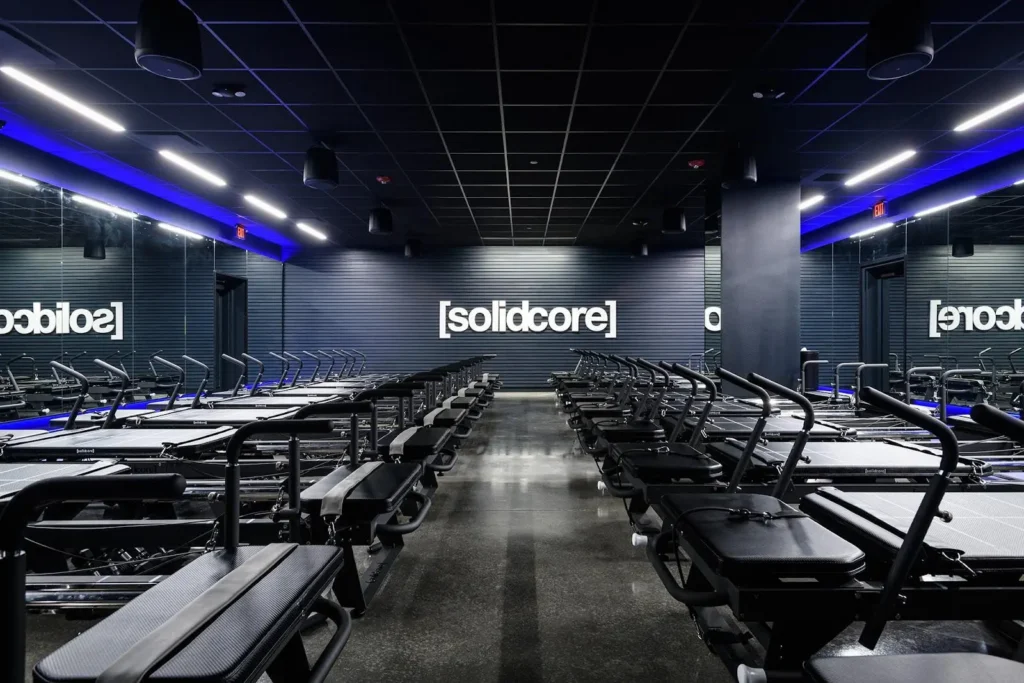
credit: [solidcore] 1. Solidcore Acquired, Valued at $600-700M Amid Pilates Boom
Solidcore continues to take the boutique fitness world by storm, and it’s just getting started. In September, the Pilates-inspired boutique fitness brand was acquired by private equity firm L Catterton in a deal that reportedly values the brand at between $600 and $700 million.
Why It Matters:
The deal marks a win not only for Solidcore but the entire Pilates space. The mind-body fitness modality surged in popularity in 2024 and shows no signs of slowing down in 2025 as brands like Solidcore and others open brick-and-mortar studios at a rapid clip across the country.
What To Watch in 2025:
Solidcore has ambitious expansion plans under president and CEO Bryan Myers. The boutique fitness brand already has over 100 open locations and said last year that it’s eyeing as many as 250 studios by 2028. L Catterton’s backing gives Solidcore even more ammunition for expansion; the brand is planning to open around 30 new locations in 2025 alone, ATN learned.
The post The Fitness & Wellness Moves That Defined 2024 appeared first on Athletech News.
]]>The post The 10 Most Popular Fitness & Wellness Stories of 2024 appeared first on Athletech News.
]]>It was an exciting year for fitness and wellness news, from funding rounds to expansion plans to big-name bankruptcies and acquisitions. Our industry continues to evolve, and we’re here for it all at ATN – but some stories catch more eyeballs than others.
These were the 10 most-read stories on Athletech News in 2024. Read on to catch up on any stories you may have missed or to get a refresher on the news that shaped the past year in fitness and wellness.
-
10. GLP-1s Present $6.8B Opportunity for Gym Industry, Report Finds
GLP-1 medications are here to stay, whether you like it or not. For the fitness industry, these weight-loss wonder drugs might hold the key to getting more Americans inside gyms and studios.
ATN breaks down a report from investment banking firm Harrison Co., which posits that the total addressable market for U.S. fitness clubs (including gyms and boutique studios) is expected to increase by $6.8 billion as a result of more people taking GLP-1s.
The hypothesis, advanced by Harrison Co. and other fitness industry stakeholders, is that as more people start losing weight as a result of GLP-1s, they’ll be more inclined to want to work out.
“I think it’s one of the biggest opportunities to come along for the industry in a long time,” Paul Byrne, a partner in Harrison Co.’s Fitness & VMS practice, told Athletech News.
Read more here.
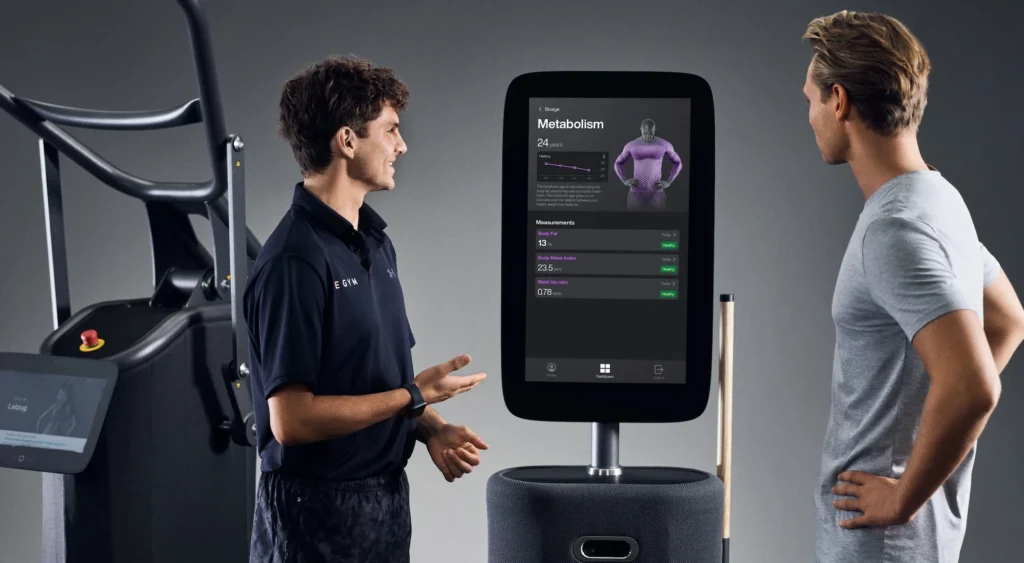
credit: EGYM 9. The Gym as a Clinic: Fitness Facilities Embrace Health & Longevity
A growing interest in longevity, combined with the perceived failures of the current American healthcare system, has created space for gyms and fitness facilities to meet the needs of disenchanted patients – a staggering 70% of United States adults believe the healthcare system fails to meet their needs in at least one way, according to Harris Poll data.
ATN breaks down how gyms, clubs and other fitness brands are positioning themselves as accessible options for preventive health and wellness.
With innovations like longevity-centered gym memberships, high-tech health tools, recovery zones and smart fitness equipment, it’s clear that the fitness industry is quickly transforming into a viable and valuable supplement to traditional healthcare.
Read more here.
-
8. Study Challenges Traditional Strength Training Wisdom
Strength training is more popular than ever, but not all weightlifting routines are created equal. Here, ATN breaks down a study from Florida Atlantic University that analyzed the relationship between training to failure and gains in muscle size and strength.
We won’t give all the findings away here, but the study’s results were interesting, possibly surprising and undoubtedly important for fitness professionals seeking to help clients in the strength training era.
Read more about the study here.

credit: Daniel Abadia on Unsplash 7. The 10 Healthiest Cities in the US Based on Overall Wellness
Everybody loves a good rankings article, especially when local pride is on the line. ATN breaks down Mindbody and ClassPass’ annual Wellness Index, which polled residents in the United States’ most populous cities to find out which ones lead the healthiest lifestyles based on metrics including sleeping habits, stress levels, alcohol consumption, family ties, spiritual fulfillment and more.
Coastal cities mostly dominated the list, but one Midwest city made a surprise appearance, proving that wellness is a truly nationwide phenomenon.
To see which city topped the list, read more here.
-
6. Xponential Fitness Dismisses CEO Anthony Geisler
In maybe the most shocking fitness and wellness news of the year, Xponential Fitness founder and longtime CEO Anthony Geisler left the boutique fitness and wellness franchisor in May following a notice of investigation by the United States Attorney’s Office for the Central District of California.
Xponential appears to have rebounded well from Geisler’s departure, with its stock price up on the year and new CEO Mark King, the former chief executive of Taco Bell, bullish on the company’s growth prospects, including international expansion plans for Xpo’s brands including Club Pilates, StretchLab and Pure Barre.
As for Geisler, he spoke with ATN this past summer in an exclusive interview, addressing his departure from Xponential, analyzing the fitness and wellness landscape, and sharing his predictions for the future.
Read more here.
-
5. Planet Fitness CEO Talks Franchise Strategy, Price Increase & GLP-1s
Earlier this year, Planet Fitness interim CEO Craig Benson presented during the ICR Conference 2024, where he shed light on the low-price gym giant’s plans for the future, including its new franchise growth model, talks of a membership price increase (which PF would go on to implement in May) and efforts to appeal to Gen Z.
While Colleen Keating took over as Planet Fitness’ new CEO this past summer, it’s still worth revisiting Benson’s comments, which outline some of the key tenets of the fitness franchise’s strategy for 2025.
Read more here.

credit: Purpose Brands/Orangetheory Fitness 4. Orangetheory Launches New Brand Strategy, Eyes Inclusive Fitness
You might’ve already seen it pop up on your TV or social media feed, but Orangetheory Fitness has a fresh new ad campaign, “Every Reason is the Right Reason,” which showcases the different motivations people have for working out at one of OTF’s over 1,500 studios worldwide.
For Orangetheory, the campaign will serve as the springboard for a broader rebranding strategy that includes a refreshed color palette, new digital designs and in-studio changes.
In this story, ATN speaks to an Orangetheory executive about the brand’s new marketing strategy, which comes as the fitness industry continues to evolve amid post-pandemic realities.
Read more here.
-
3. The Beachbody Company Axes MLM Model, Conducts Layoffs
Beachbody’s famous (or infamous) multi-level marketing (MLM) model is no more. The iconic fitness company, known for workouts such as P90X and Insanity, has fallen on some hard times as of late, although it’s looking to change course under a new name, BODi.
ATN breaks down BODi’s decision to axe its controversial MLM model in favor of a single-level affiliate program, which came in tandem with BODi’s decision to shed approximately 33% of its staff as part of a streamlining strategy.
Read more here.
-
2. Orangetheory, Anytime Fitness Unveil Parent Company, Name New CEO
Orangetheory makes a second appearance on ATN’s 2024 Most Popular list, this time for a story exploring the fitness brand’s new parent company, Purpose Brands.
Formed following the mega merger between Orangetheory and Anytime Fitness parent Self Esteem Brands, Purpose Brands will act as the holding company comprising Orangetheory, Anytime, The Bar Method, Basecamp/Sumhiit Fitness and Waxing the City, among other entities.
ATN looks at Purpose Brands’ new strategy, with exclusive insights from its CEO Tom Leverton, Anytime Fitness co-founder Chuck Runyon and Orangetheory co-founder Dave Long.
Read more about Purpose Brands here.
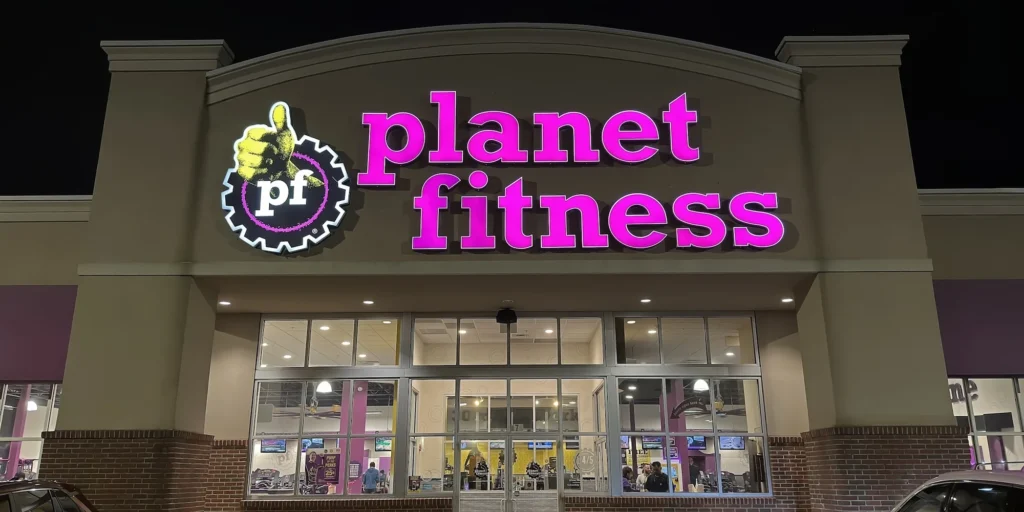
Credit: QualityHD/shutterstock.com 1. Planet Fitness ‘Flexing for Good’
We close out this list with a feel-good story courtesy of Planet Fitness. ATN breaks down the low-price gym giant’s “Flexing for Good” volunteer initiative, an annual event where Planet Fitness team members and franchisees lend their support to local communities.
“Flexing for Good” generates approximately 800 volunteer hours both in-person and virtually for non-profits including Boys & Girls Clubs of America. In fact, since 2016, Planet Fitness has donated more than $9.5 million to Boys & Girls Clubs of America, proving that fitness can be a force for good in more ways than one.
Read more about Planet Fitness’ philanthropic endeavors here.
The post The 10 Most Popular Fitness & Wellness Stories of 2024 appeared first on Athletech News.
]]>The post Planet Fitness Poised for Strong 2025, Analysts Say appeared first on Athletech News.
]]>Planet Fitness’ strategy under new CEO Colleen Keating is starting to take shape, and at least some analysts are confident the low-price gym giant will be able to reassert its dominance in 2025, buoyed by a revamped marketing plan and a shift to more strength training equipment.
In an equity research report published Friday, analysts from TD Cowen expressed optimism in Planet Fitness’ future under Keating, who took over in June at a pivotal time for the high-value, low-price (HVLP) gym brand.
The analysts said they met with Planet Fitness’ executive team including Keating, chief financial officer Jay Stasz, retiring CFO Tom Fitzgerald, and vice president of investor relations Stacey Caravella, and that the meeting “re-affirmed our confidence” in the gym brand’s stock as a “buy” for 2025.
“We expect changes around marketing, messaging, box lay outs, and franchise economics to reaccelerate openings, members, and comps growth,” the analysts wrote. “Progress will take time, but we expect a better 1Q, and are encouraged by the price transition.”
Just before Keating took over, Planet Fitness in May raised the price of its Classic Card membership from $10 per month to $15, its first price hike in nearly 30 years.
Planet Fitness is still the largest gym chain in the United States with over 2,000 locations and around 20 million members, including a sizable Gen Z contingent. However, the brand is facing increased competition from low-price gyms including Crunch Fitness, EōS Fitness, Chuze Fitness and Vasa Fitness, which have won over a certain portion of the fitness population by offering amenities like group fitness classes, recovery services and premium strength training equipment at price points at or near Planet’s $15/month offering.
Marketing to Gym-Goers
To fend off competition from those brands, Keating has made revamping Planet Fitness’ marketing strategy a top priority. This includes focusing on fitness over fluff, and positioning Planet as a brand for serious gym buffs.
“We’re beginning the shift to communicating the high value of a Planet Fitness membership versus primarily focusing on our low price and using our marketing to demonstrate the breadth of high-quality top-tier equipment in our club,” Keating explained during a Q3 earnings call last month.

TD Cowen analysts noted that Planet Fitness execs are aligned on delivering a marketing message that’s focused on “getting people off the couch” and into the gym. In line with Keating’s comments, the brand will also focus on “dispelling the perception members can’t advance their fitness journey at its gyms,” the analysts wrote.
New marketing tactics include touting the quality of Planet Fitness’ workout equipment, especially its strength training offerings. In a recent social media campaign, the brand compared its dumbbells to those of an “overpriced competitor gym,” noting that both pieces of equipment weigh the same and will get you the same results, but a Planet Fitness membership is cheaper.
Similar marketing initiatives will be implemented this month and over the first quarter of 2025 across social media and on TV, the analysts said. They caution, however, that Planet Fitness is still searching for a new chief marketing officer, who will want to “put their stamp on the business,” so the brand’s marketing strategy could evolve.
Strength Training Shift
To match its new marketing ethos, Planet Fitness is also changing the look and feel inside of its gyms, notably by embracing strength training and cutting down on cardio. TD Cowen analysts noted that the brand is tweaking the layouts of its gym floors to include “a better mix of on-trend equipment.”
According to the report, Planet Fitness gyms around the country are gradually adding more strength training equipment, including free weights, and removing some cardio machines, eyeing a 50/50 split between the two modalities. That move follows industry trends as gym-goers, especially young people and women, flock to strength training.
“This should improve the member experience by increasing equipment relevance and reducing wait times,” the analysts wrote.

In the long term, Planet Fitness execs are also looking to improve franchise economics to drive more gym openings in the years ahead. That includes lowering build-out costs for new gyms by around 10%, making it cheaper for franchisees to buy and maintain equipment, and increasing revenue through the Classic Card price increase, per the TD Cowen report.
Overall, the report is positive on Planet Fitness’ outlook ahead of a pivotal January – the brand’s first with its new $15/month pricing structure. TD Cowen predicts that Planet will add around 1.1 million net members in the first quarter of 2025.
“We expect a strong 1Q, but net member growth could look different from prior years as it will be the first 1Q with a higher price point,” the analysts wrote.
The post Planet Fitness Poised for Strong 2025, Analysts Say appeared first on Athletech News.
]]>The post PureGym Celebrates Milestone 400th Gym in U.K. appeared first on Athletech News.
]]>PureGym has hit a new milestone in the U.K., opening its 400th gym this week in Plymouth Derriford, offering members 24/7 access and group fitness classes.
The leading gym operator — known for its budget-friendly, zero-contract membership — has opened 44 gyms in the U.K. this year and plans to open at least another 200 across the country in the near term. Earlier this year, PureGym acquired 15 sites from Carpetright, which are set to be converted and opened under its banner before the end of 2025.
“Since opening our first gym in Leeds in 2009 demand for high-quality, low-cost fitness has grown exponentially, with a gym membership moving from a ‘nice to have’ to a ‘must have’ for millions of people,” PureGym group chief operating officer Rebecca Passmore said. “We’ve embarked on ambitious expansion to meet this demand, investing in cities, towns and retail parks across the UK to provide greater access to affordable and flexible fitness facilities.”
PureGym is also set to expand in the U.S., having acquired 67 Blink Fitness sites in New York, New Jersey and Pennsylvania in a $121 million deal that will see the gyms rebranded under PureGym.
“It is worth noting that in paying $121 million, we believe this is a very good value for a portfolio of this nature, and we expect the deal to be very value-accretive for PureGym,” new PureGym CEO Clive Chesser said earlier this month. “And last, but by no means least, the strong foothold in New York, New Jersey and the scaled-up presence in the US as a whole clearly provides us with a platform for growth in the largest fitness market in the world.”
The post PureGym Celebrates Milestone 400th Gym in U.K. appeared first on Athletech News.
]]>The post Bankruptcy Court Greenlights Blink Fitness Sale to PureGym appeared first on Athletech News.
]]>The United States Bankruptcy Court for the District of Delaware has given Blink Fitness the green light to offload its corporate operations and New York and New Jersey locations to PureGym, one of the U.K.’s leading fitness operators, in a $121 million cash deal.
The court also approved the sale of Blink’s Chicago, Houston, and California gyms to an affiliate of JTRE Holdings LLC, although the agreement doesn’t include Blink’s franchised locations. Both deals are expected to close later this year.
“We are pleased to have reached another milestone in our sale process, and look forward to emerging an even stronger business, under new ownership that believes in the value of our mission,” Blink Fitness president and CEO Guy Harkless said. “We are excited to continue our work to position the business and various gyms for long-term success as we remain focused on providing members with an inclusive, community-focused gym experience. I’d like to reiterate my thanks to each member of Blink Nation, who go the extra mile every day, providing members with an elevated gym experience.”
The Blink Fitness deal gives PureGym an edge at a time when demand for affordable gyms has intensified, especially among young fitness consumers looking for flexible hours and classes. Of particular note, high-value, low-price gym giant Planet Fitness reportedly submitted a last-minute bid for Blink Fitness after its initial offer was rejected due to antitrust concerns.
Since its 2009 launch, PureGym has grown to 600+ gyms, roughly 2 million members and already has a presence in the U.S. with three locations under the Pure Fitness brand. PureGym also operates corporate-owned locations in the U.K., Denmark, and Switzerland, as well as 20 sites under a franchise partner in Saudi Arabia and the UAE.
PureGym CEO Humphrey Cobbold noted that the fitness operator is looking forward to working with Blink Fitness to deliver a “fantastic fitness experience” for members.
“It is also the right moment to pay tribute to the PureGym team who have been involved in our acquisition of Blink Fitness,” he added. “In getting to this point our team has worked tirelessly over the last few months, with great professionalism and dedication, and I pay tribute to the role they have played in what is a transformational moment for PureGym in the USA.”
The post Bankruptcy Court Greenlights Blink Fitness Sale to PureGym appeared first on Athletech News.
]]>The post Planet Fitness PerksFest Returns appeared first on Athletech News.
]]>PerksFest, an exclusive member-saving initiative headed by gym giant Planet Fitness, has returned.
The program, which is available on the PF app, -will run through December 6 and offers Planet Fitness members access to savings from brands like Apple Music, Apple TV+, HelloFresh, Hotels.com, Ninja, WeightWatchers, and more.
“Planet Fitness is dedicated to bringing exceptional value to our members inside and outside of our clubs,” Planet’s senior director of partnerships Justin Unger said. “We know our members are always looking for ways to maximize on savings during the busy and expensive holiday shopping season, and we’re excited to offer a wide range of Perks for them to enjoy just for being a member.”
Unger added that the fitness franchisor has collectively saved its members $7.6 million this year alone through the PF Perks Program.
“With members saving an average of $53 for every PF Perks redemption, they’re able to save the cost of three months of a Classic Card membership and two months of the PF Black Card membership,” he continued.
Here is a rundown of the PerksFest discounts and special offers that are available to members of the fitness franchise:
- AARP: Get a five-year membership for just $45 (a 43% discount off the annual rate)
- Apple Music: PF Black Card members can enjoy up to three months free, Classic Card members up to two months free
- Apple TV+: PF Black Card members receive two months free, while Classic Card members get one month free
- Expedia: Take an additional 8% off already discounted stays for your next trip
- Factor: Get $140 off plus Free Wellness Shots for Life with your order
- Good Chop: Receive $140 off high-quality American meat and seafood deliveries
- Green Chef: Enjoy 50% off and a free item for two months
- HEYDUDE: Save up to 25% on select styles plus free shipping on orders $40 or more
- HelloFresh: Get $100 off plus free shipping on your first box
- Hotels.com: Take an additional 8% off already discounted hotel stays
- Ninja: Stack a 13% off on your next purchase
- Paleovalley: Get 30 Beef Sticks for $30
- PF Store: Save 35% on your purchase
- Purple Carrot: Get 50% off your first two boxes of plant-based meal kits
- SeatGeek: Get $20 off your order of $250 or more
- SiriusXM: Stream radio and entertainment for $1 per week for a year
- WeightWatchers: Get 60% off plus your first month completely free
The big box gym leader is wrapping up a year of transformation — one that saw the first price hike in nearly 30 years for its base membership tier and a new CEO, Colleen Keating. On a recent call with investors, Keating outlined Planet’s upcoming initiatives, sharing that the high-value, low-price fitness operator will redefine its brand strategy to appeal to former members and those training for marathons. Other plans include advancing PF’s international footprint and introducing new tech enhancements.
The post Planet Fitness PerksFest Returns appeared first on Athletech News.
]]>The post Couch Potatoes to Gym Buffs: Planet Fitness Has a New Strategy appeared first on Athletech News.
]]>Planet Fitness is doubling down on efforts to position itself as the go-to-club for fitness consumers at all phases of their fitness journey and will refine its brand strategy to appeal to former members, gym newbies, and those training for marathons, the gym giant announced on its Q3 earnings call with investors.
Planet’s total revenue rose 5.3% to $292.2 million in the third quarter compared to the prior year’s period and saw system-wide same-club sales growth of 4.3%. During the quarter, 21 new Planet Fitness clubs were opened, which included 12 franchisee-owned and 9 corporate-owned clubs.
The popular fitness chain has long described 2024 as one of transition — one that included a base membership price increase over the summer for the first time in nearly 30 years for new members. The brand continues to resonate with Gen Z and millennials, who consistently make up the largest group of new members and are influencing Planet’s format and equipment mix, which has shifted toward strength training.
“We delivered solid results in the quarter, including more than 5 percent revenue growth, approximately 3 percent net income growth, and approximately 10 percent Adjusted EBITDA growth, and are raising our outlook for certain key financial targets,” Planet Fitness CEO Colleen Keating said.
Keating, appointed CEO of the HVLP fitness operator earlier this year, has adopted a “feet on the street” approach, visiting over 50 Planet Fitness clubs during her first 100 days and engaging with franchisees, managers, and team members.
“I’ve seen a lot of gyms in my day, and when you’re in one of our clubs, you know you’re in a Planet Fitness,” Keating said. “They’re bright, clean, and energizing with a friendly, welcoming, and approachable feel. Yet what really excites me is that we have an opportunity to build on our quality and modernize our experience to ensure our equipment layout and floor plan consistently deliver for our members today and keep us relevant for tomorrow.”
Despite the energetic atmosphere within Planet Fitness clubs, Keating shared that a recent consumer survey found that both members and non-members do not view Planet Fitness as a place to advance their fitness training—a perception the brand is beginning to challenge through its campaigns. One late-summer social media campaign, for instance, compared a Planet Fitness dumbbell to a high-priced gym dumbbell of equal weight, demonstrating Planet’s value in a humorous way.
“We’re beginning the shift to communicating the high value of a Planet Fitness membership versus primarily focusing on our low price and using our marketing to demonstrate the breadth of high-quality top-tier equipment in our club,” Keating explained.
Keating pointed out that while Planet’s long-term target of 5,000 clubs in the U.S. is based primarily on its 20,000 square-foot traditional facility model, the fitness chain continues to work on smaller footprint clubs for infill locations and less populated areas, which she says furthers domestic opportunities.
Other initiatives in the pipeline include enhancing the Planet Fitness member experience and accelerating new club growth. The brand also teased “cool tech enhancements” on the horizon.
Planet Fitness is also continuing to build its presence in newer markets such as Mexico, Spain, and Australia.
The post Couch Potatoes to Gym Buffs: Planet Fitness Has a New Strategy appeared first on Athletech News.
]]>The post Planet Fitness Makes Play for Blink Fitness in Last-Minute Bid appeared first on Athletech News.
]]>Planet Fitness has made a last-minute bid to compete for Blink Fitness in a second attempt to seize the budget gym chain after its initial offer was rejected over antitrust concerns, according to CNBC.
Last week, U.K. gym operator PureGym won a bankruptcy auction for the Equinox-owned gym brand with a $121 million bid — a move that gives the U.K. gym operator a sizable portion of Blink’s locations in New York and New Jersey.
Planet Fitness, set to report its Q3 2024 earnings on Thursday, has proposed two offers to Blink Fitness, according to CNBC: a $142 million offer for Blink’s assets, provided Planet Fitness isn’t required to address antitrust concerns, and a $155 million offer that includes select regulatory filings.
A Delaware bankruptcy court is scheduled to consider Planet’s proposals on Wednesday.
Blink Fitness confirmed that it is continuing to evaluate bids submitted for its locations outside the Northeast, including its gyms in California, Illinois, Massachusetts, and Texas. The gym brand had filed for bankruptcy in August, although it noted that revenue had increased by nearly 40% over the last two years. Earlier this year, Blink Fitness had unveiled a multimillion-dollar investment to refresh 30 of its most frequented gyms.
Considered a top player in the U.K. gym scene, PureGym’s move to acquire Blink would give the company a meaningful presence and strong foothold in the New York and New Jersey markets, PureGym CEO Humphrey Cobbold said. The fitness operator already has a presence in the U.S. under the Pure Fitness brand, with three locations in the Washington, D.C., area.
“U.S. expansion has been an important part of our growth plan, which is why we actively participated in the Chapter 11 process and entered into an APA with Blink Fitness,” Cobbold explained. We have, over several months, spent a considerable amount of management time and resources getting to know the business, and the management team and have developed an excellent understanding of both its prospects and the opportunity it represents.”
The post Planet Fitness Makes Play for Blink Fitness in Last-Minute Bid appeared first on Athletech News.
]]>The post As Gyms Enter Wellness and Recovery, Execution Is Key appeared first on Athletech News.
]]>The global wellness economy now stands at $6.3 trillion as consumers prioritize their wellbeing more than ever before.
Gyms and health clubs are increasingly getting in on the action, offering modalities ranging from infrared saunas and cold plunges to personalized wellness coaching and medically assisted weight-loss services.
Still, the fitness industry is in the early days of its embrace of wellness, and it’s not always clear which strategy gym operators should take.
Three experts in the burgeoning wellness and recovery space – Wellness JK president and CEO Brynn Scarborough, Othership co-founder and CEO Robbie Bent, and longtime fitness entrepreneur Mike Hansen – got together during ATN’s DISRUPT 2024 video series to tackle this vexing problem for operators.
In the panel, “Wellness Room: Building the Ultimate Recovery Experience,” Scarborough, Bent and Hansen give their views on how gyms should position themselves to create winning wellness and recovery experiences.
Recovery as a Core Gym Offering
Hansen, an entrepreneur and advisor with over 25 years of fitness industry experience, is all-in on wellness and recovery.
A former 24 Hour Fitness staffer, Hansen believes offering wellness and recovery services is a must for gyms looking to compete in the modern era.
“Back in the day at 24 Hour Fitness, we would always sell on the five components,” he recalls. “To me, this actually brings us to a point where we should have six components; recovery is one of those components now. We never used to sell it; we would sell nutrition, cardio, resistance, supplements and education. We have to add recovery now.”
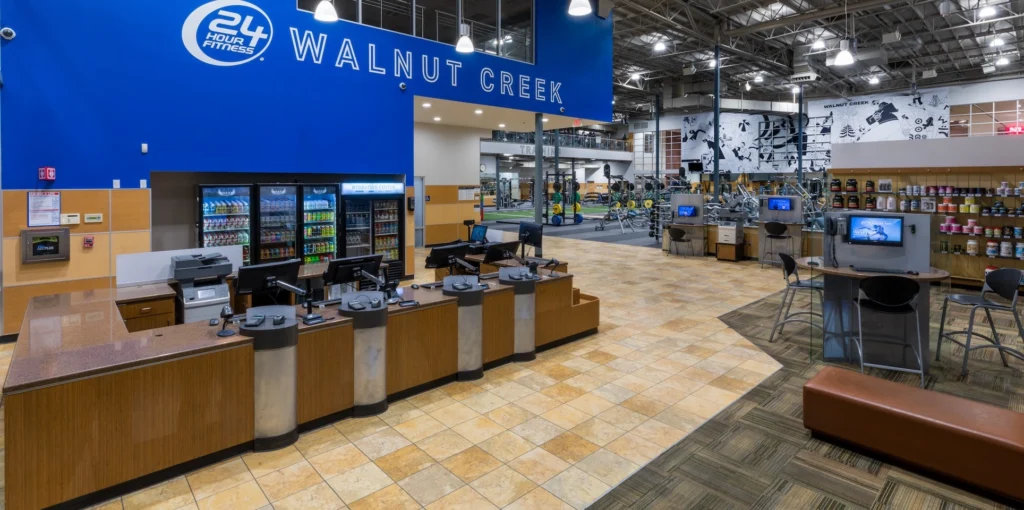
Hansen cautions that gyms can’t add recovery services as a “check-the-box” measure; they must invest resources into providing a top-class experience, including educating their staff on new modalities.
“I actually don’t think anybody has solved it on the gym side of the equation,” Hansen says, noting that this has created a gap in the market that’s allowed social wellness concepts to flourish as consumers seek more holistic experiences outside of the gym.
“It’s a tough road for (gym) operators who aren’t willing to be open to change,” Hansen adds.
The Trifecta: Ease of Use, Accessibility & Effectiveness
Scarborough, who leads Wellness JK, one of the world’s top providers of wellness and recovery equipment, offered some practical advice for gyms and clubs looking to create winning recovery rooms.
When it comes to selecting the right modalities, “ease of integration” and “accessibility” are key, Scarborough says.
“Is your front-desk person going to be able to say in three sentences what it is and consistently repeat that message from an uptake perspective?” she says.
Gyms should also prioritize wellness and recovery modalities that their members can easily understand. This is more beneficial than chasing the latest and greatest tech, according to Scarborough
“Accessibility is extremely important. … At the end of the day, the backbone of America is small-town America. What’s actually going to make it across the population?” she says.
Lastly, wellness and recovery modalities must be effective in order to drive long-term use. Ideally, members should be able to feel those effects right away.
“That’s why cold plunge is so sticky from a consumer perspective, because you get out and you have this rush of happy hormones for the rest of the afternoon,” Scarborough notes.
Scarborough mentioned tools like red light and dry water massage as other modalities that can produce those types of immediate effects.
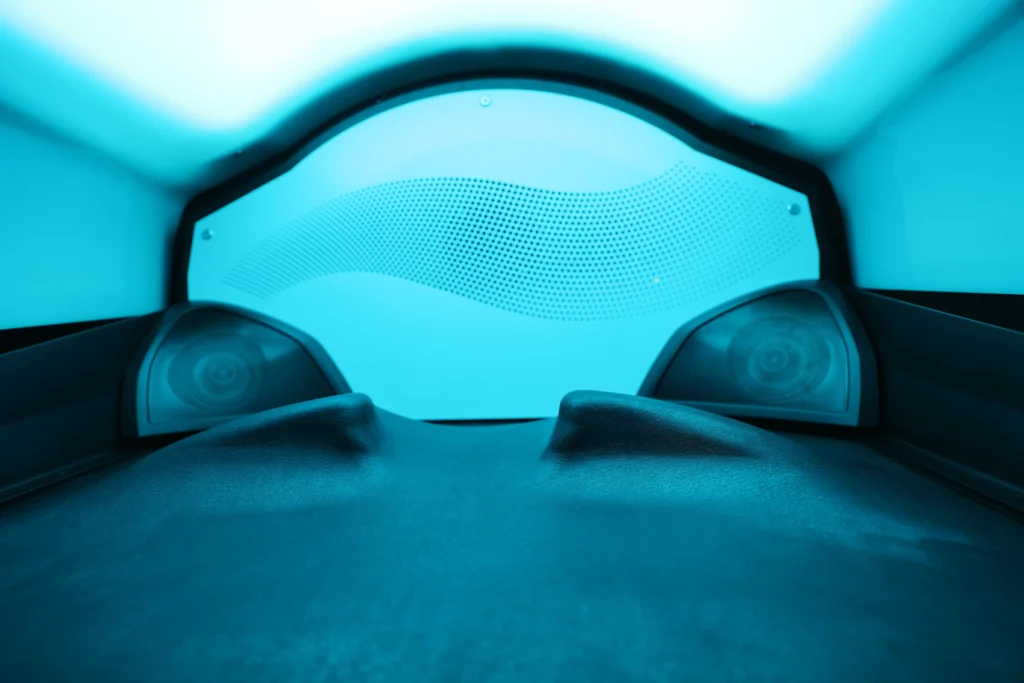
“In traditional fitness, they’re just starting to scratch the surface into some of these modalities,” Scarborough says, although she pointed to Planet Fitness as a good example to follow. The high-value, low-price (HVLP) gym giant offers modalities including HydroMassage beds and massage chairs as part of its premium Black Card membership option, and has been doing so for quite some time.
“Whether you love them or you hate them, they were two decades ahead of this trend,” Scarborough says of Planet Fitness.
Tapping Into the Social Side of Wellness
Bent, the CEO of Othership, a highly popular communal sauna and ice bath studio with locations in Toronto and New York City, believes gyms can tap into wellness and recovery, but they should also be careful not to overextend themselves.
While social wellness experiences like Othership may be taking off, that doesn’t mean gyms should be racing to create their own versions of a bathhouse.
“I think it’d be very hard as a gym to also be an expert in a bathhouse offering,” Bent says, although he notes gyms can still offer things like saunas and cold plunges, albeit in a less immersive way.

Gyms may have a big opportunity on the fitness side of the social wellness spectrum, however. Bent points to The Athletic Clubs, a New York-based boutique fitness brand that trains people in small groups called “squads” to foster meaningful connections in an era of epidemic loneliness.
“That seems like a simple thing that a gym can add without new equipment,” Bent says. “How do you connect your members with what you have?
“I think there’s a huge opportunity for gym operators to look at that Athletic Clubs model and start to offer (squads) to connect people while they’re working out,” he adds.
Overall, Bent is bullish on the rapid growth of the wellness and recovery space, which should bring more people into a healthy lifestyle.
“I could see a world where 90% of people are looking for social solutions that don’t involve alcohol,” he says. “I think that bodes well for all gym operators.”
The post As Gyms Enter Wellness and Recovery, Execution Is Key appeared first on Athletech News.
]]>The post Planet Fitness Shows Strong Foot Traffic Ahead of Q3 Earnings appeared first on Athletech News.
]]>High-value, low-price gym giant Planet Fitness has seen a steady increase in year-over-year visits in recent months, outpacing its competitors, according to a new report from Placer.ai.
The findings come just ahead of Planet’s third-quarter earnings report on November 7.
Placer.ai, which specializes in location analytics, found that foot traffic data showed Planet Fitness thriving in Q3, with monthly visit increases ranging from 4.1% to 11.6% — suggesting that its basic membership price hike over the summer had minimal (if any) impact.
Another key takeaway from the report is that in Q3, 44.3% of Planet Fitness visitors went to the gym less than twice a month on average. However, the gym giant is maintaining a dedicated base of members who visit at least eight or ten times a month. It’s a member segment that has grown steadily — in Q3, 16.8% of Planet Fitness visitors went to the gym at least eight times a month on average, up from 12.9% in 2019 and 15.3% in 2022. A similar trend exists for members who visited Planet Fitness ten or more times a month in Q3 (11.9%), up from 8.6% in 2019 and 10.6% in 2022.
Placer.ai also discovered that New Mexico led the way in Q3 in visit frequency to Planet Fitness. The report indicates that 3.9% went, on average, at least ten times a month, followed by Rhode Island (13.1%) and California (12.7%). In contrast, members in Montana, Iowa and Vermont were less committed.
New Planet Fitness CEO Colleen Keating has outlined several priorities for the “Judgement Free Zone,” fitness operator, including revamped brand messaging that emphasizes the “high value” aspect of the HVLP model as it continues to lure Gen Z fitness consumers, which make up the majority of the PLanet’s net new joins each quarter.
“We’re seeing Gen Zs as the fastest-growing segment of our member population,” Keating told investors in August.
Planet Fitness opened its first gym in Spain over the summer, kicking off its strategic growth plan in Europe. The gym operator plans to open 300 locations in Spain and is eager to introduce the HVLP model to overseas fitness consumers.
“Today, only 10% of the Spanish population has a gym membership, so this is an incredible opportunity to bring our brand and unique model to Europe,” Keating said.

This week, Planet Fitness appointed a new chief financial officer: retail exec veteran Jay Stasz, who will succeed Tom Fitzgerald. The move is effective November 15. Fitzgerald will remain with Planet Fitness through the end of December and transition to a consulting role through March 31, 2025.
The post Planet Fitness Shows Strong Foot Traffic Ahead of Q3 Earnings appeared first on Athletech News.
]]>The post Planet Fitness ‘Flexing for Good’ appeared first on Athletech News.
]]>Planet Fitness is reflecting on its successful ‘Flexing for Good’ volunteer initiative, an annual and impactful event where the gym giant invites Planet Fitness team members and franchisees to support local communities.
‘Flexing for Good’ generates approximately 800 volunteer hours both in-person and virtually for non-profits such as Boys & Girls Clubs of America, Blue Ocean Society for Marine Conservation, Habitat for Humanity, Hire Heroes USA, Special Olympics, and several numerous local food banks and hospitals.
Many Planet Fitness locations also hosted in-club donation drives to benefit the fitness franchisor’s national non-profit partner, Boys & Girls Clubs of America, and other local organizations.
“At Planet Fitness, providing access to fitness and ensuring everyone feels welcome and supported both in our clubs and in our communities is core to what we stand for as a brand,” chief corporate affairs officer McCall Gosselin said. “Our annual ‘Flexing for Good’ volunteer initiative provides team members with the opportunity to give back to the communities we serve, and we were thrilled to invite our franchisees and their teams to participate in the initiative with us this year.”
The fitness franchise has donated more than $9.5 million since its partnership with Boys & Girls Clubs of America began in 2016.
Planet Fitness is also hosting its annual fundraiser for Boys & Girls Clubs of America across all clubs in the U.S. and Puerto Rico and via PF Gives.
“The recent visit from the Planet Fitness team at our Greater Salem location was such an incredible experience for everyone in our organization, most importantly, the children we serve in our community,” Boys & Girls Club of Greater Salem CEO Marco Abreu said. “The energy and enthusiasm their team brought to our club that day was so inspiring and perfectly aligned with our shared values of health and wellness as essential parts of children’s physical, mental, and emotional development. We’re so thankful to Planet Fitness and the positive impact they made during their visit.”
Planet Fitness, now led by CEO Colleen Keating, who took the reins earlier this year, is expected to release its Q3 earnings report in early November. In August, Keating shared with investors that she believes Planet Fitness can double its domestic footprint to approximately 5,000 locations, surpassing the 4,000 location target it had during its 2015 IPO.
The post Planet Fitness ‘Flexing for Good’ appeared first on Athletech News.
]]>The post Rainier, Omega Fitness Acquire More Anytime Fitness Gyms appeared first on Athletech News.
]]>Rainier Partners and its subsidiary Omega Fitness have acquired 21 Anytime Fitness gyms in Wisconsin from MDS Fitness, increasing Omega’s foothold in the Midwest as it expands nationwide.
With the new acquisition Omega Fitness now counts over 120 Anytime Fitness gyms across California, Florida, Illinois, Minnesota, and Wisconsin, making it the second-largest Anytime franchisee in the United States.
Seattle-based private equity firm Rainier Partners acquired Omega Fitness – a group created by franchise operators Andy Gundlach and Russ Allen – in November 2023, announcing its intentions to expand Omega’s portfolio through acquisitions while optimizing the group’s existing clubs.
Since that deal, the PE firm says Omega has doubled the number of gyms in its portfolio.
“The growth we have seen since Rainier’s initial investment in November 2023 is remarkable, and the addition of MDS Fitness’ gyms furthers our goal of strengthening our presence in target geographies,” said Gundlach, who serves as Omega Fitness CEO. “Rainier’s partnership and strategic guidance have undoubtedly accelerated our growth trajectory. We are excited to continue this momentum through the remainder of 2024 and beyond.”
Anytime Fitness is one of the largest big-box gym chains in the world with over 5,000 locations in 50 countries. The 24/7 gym chain continues to pursue franchise expansion in the U.S. and internationally, recently striking deals to expand in Dubai and across the Middle East, as well as in Indonesia.
PE Firms Love the Gym Business
Investors continue to pump money into large franchise groups that own multiple gym locations under brands like Anytime, encouraged by the resurgence of in-person fitness following the pandemic and Gen Z’s interest in attending the gym.
Last month, Los Angeles-based private equity firm Meaningful Partners acquired Fitness Ventures LLC, the second-largest Crunch Fitness franchise group, in an expansion play. Several other Crunch franchisees have received major investments over the past year.
Flynn Restaurant Group, the largest franchise operator in the world, made waves in 2023 when it acquired a large Planet Fitness franchise group. The deal marked Flynn’s entrance into the fitness space, underscoring the confidence established investment firms have in the financial health of gyms.
Meanwhile, BlackRock’s Impact Opportunities Fund has signed on to open at least 80 Retro Fitness gyms in Black and Brown communities over the next 5 years as part of an initiative called Project Lift.
As for Anytime Fitness, it’s unlikely this will be the last time we hear about Omega Fitness expanding its portfolio of gyms.
With Rainier’s backing, the franchise group is actively pursuing further expansion, saying it’s focused on “establishing geographic density in select markets.”
“Since day one, we knew we had a big runway ahead of us. We have been laser-focused on deploying our Summit value creation playbook in partnership with Omega Fitness to seamlessly integrate the acquired businesses both operationally and financially into Omega’s strong platform,” said Dave Shephard, Rainier’s director of portfolio operations. “We are thrilled with how the company is performing and will continue to support its leadership team.”
The post Rainier, Omega Fitness Acquire More Anytime Fitness Gyms appeared first on Athletech News.
]]>The post Older People Are Highly Active but Don’t Love the Gym. Gen Z Is the Opposite appeared first on Athletech News.
]]>As people age, they’re more likely to be active but less likely to belong to a gym, health club or fitness studio, a new report suggests.
ABC Fitness released its Fall 2024 Wellness Watch report, which offers data on the fitness preferences of different age groups based on third-party consumer research.
According to the report, Baby Boomers are the most active generation but younger people are much more likely to attend in-person fitness facilities.
The report shows an inverse relationship between a generation’s stated activity level and the likelihood of its members attending the gym: Gen Z considers itself to be the least active of any generation surveyed but has the highest percentage of gym, studio or health club users. Baby Boomers consider themselves to be highly active but are less likely to frequent gyms, clubs or studios.
Of those surveyed, 80% of Baby Boomers consider themselves to be active, compared to 73% of Gen X, 76% of Millennials and 66% of Gen Z.
However, 73% of Gen Z said they’re currently a member of or are using a health club, gym or studio, compared to 72% of Millennials, 54% of Gen X and 42% of Baby Boomers.
It’s notable that, at least among those surveyed, Gen Z has more people who go to the gym than those who consider themselves active. That means there are at least some Gen Z-ers who belong to a gym, club or studio but don’t call themselves “active.”
Personal Training, Group Fitness & Wearable Preferences
Working out alone is the activity of choice for all generations, although Gen Z and Millennials are more likely to hire a personal trainer, with 38% of those surveyed in each group saying they use in-club personal training services.
Gen Z is the least likely of all age groups to take group fitness classes inside the club. Among those surveyed, only 27% of Gen Z members take group fitness classes, compared to 36% of Millennials, 40% of Gen X and 36% of Baby Boomers.
All generations show a receptiveness to wearable technology – 56% of Gen Z said they use a fitness wearable, compared to 48% of Millennials, 56% of Gen X and 43% of Baby Boomers.
Overall, ABC Fitness says the findings point to one universal – and reassuring – truth. People in all age groups are putting more emphasis on their health and wellness.
“Although the general public has long recognized the importance of physical health, more recently we have seen a growing emphasis on staying active at every stage of life,” said ABC Fitness CEO Bill Davis. “The fitness industry must evolve to support people of all ages, creating a unique opportunity for gyms, studios and personal trainers to personally tailor and help more individuals through their services.”
Key Findings by Generation
The team at ABC Fitness compiled some key findings for each generation surveyed.
Gen Z (ages 18-24) tends to prioritize stress relief and mental health alongside physical fitness. Unsurprisingly, Gen Z tends to be more fickle than other age groups: 55% have been members of their gym, club or studio for less than 12 months.
Millennials (25-39) also prioritize mental health, and they tend to emphasize flexible fitness options that fit into their busy lives. Many Millennials balance traditional in-person gym activities with at-home fitness.
Gen X (40-55) focuses on maintaining general activity and stress relief. They also seek efficiency and good value for time in their workouts. Gen X members who belong to a gym, club or studio tend to be highly engaged, with 30% visiting clubs more than 12 times per month.
Baby Boomers (56-65) are the most active generation, and they tend to emphasize staying generally active and looking after their mental health. Boomers who belong to a gym are highly dedicated: 36% visit fitness clubs more than 12 times per month.
Fitness Brands Race To Attract Gen Z
Fitness brands are racing to win over the hearts and wallets of Gen Z, which has shown a willingness to spend on health and wellness even if it means cutting back on other areas like entertainment.
Gen Z is flocking to high-value, low-price (HVLP) gyms like Planet Fitness, Crunch Fitness and more, which are winning young people over with affordable membership fees, new strength training equipment and even workout spaces dedicated to filming content for social media.
On the virtual fitness side, brands like Les Mills have tailored their programming and marketing to capture Gen Z consumers. Les Mills has even embarked on a project to help fitness brands recruit more young fitness instructors.
Baby Boomers Go Virtual
On the other end of the spectrum, at-home fitness brands have sought to appeal to older generations like Baby Boomers, who continue to prioritize physical activity but often prefer to avoid the gym scene.
Smart home fitness brand Tonal has made it a point to market the benefits of strength training to older populations. Last year, Tonal launched a series of “Ageless Strength” workouts designed for people aged 55 and older.
Studies have also shown that regular strength training can offer powerful anti-aging benefits for older people, including improving balance, mobility and resistance to injuries.
“I’m not going to say strength training is the fountain of youth — but it’s pointing in the right direction,” Tonal executive Matt Bean has told Athletech News. “Whether it’s the reduction in all-cause mortality, the extension of healthspan or even the age-related decline in muscle mass, strength, and bone density, it has become crystal clear just how important it is to resistance train.”
Download the full version of ABC Fitness’ Fall 2024 Wellness Watch here.
The post Older People Are Highly Active but Don’t Love the Gym. Gen Z Is the Opposite appeared first on Athletech News.
]]>The post Workout Anytime Goes All-In on Premium Wellness appeared first on Athletech News.
]]>The look and feel of the 24-hour gym is quickly changing as brands embrace high-end amenities once reserved for luxury facilities.
One of the 24-hour brands leading that charge, Workout Anytime, is investing big in wellness and recovery, adding amenities including sauna (traditional and infrared), red light therapy, massage chairs and percussion guns. Cold plunge tubs could be coming soon, too, if a trial run at one of the brand’s Arizona locations goes well.
The Atlanta-based Workout Anytime currently counts around 200 gyms, all of which are open 24/7, and is continuing to grow. So far in 2024, the gym brand has signed 12 new franchise agreements and completed six transfers.
For Workout Anytime, embracing wellness makes business sense for a couple of reasons: it helps the brand attract new customers who wouldn’t ordinarily step foot in a gym, and it drives more revenue per existing member through premium membership sales.
The Key To Motivating the 80%?
Greg Maurer, vice president of education at Workout Anytime, points out that around 80% of Americans still don’t own a gym membership. The fitness industry has been trying to appeal to this famous “80%” segment for years now, with little success.
Wellness modalities might hold the key to getting this stubborn cohort into the gym, even if it’s not to work out.
“People on the couch, which is most people, still feel like they don’t belong in a gym,” Maurer tells Athletech News. “These amenities can provide real, tangible mental and physical benefits for everyone, even if you’re not working out yet.”
Getting just a small slice of the 80% into gyms would mark a serious financial win for brands like Workout Anytime.
“Just expanding another five or 10% of that group is unbelievable,” Maurer says. “It doesn’t have to move a large percentage of people before it has a very significant impact on our bottom line.”
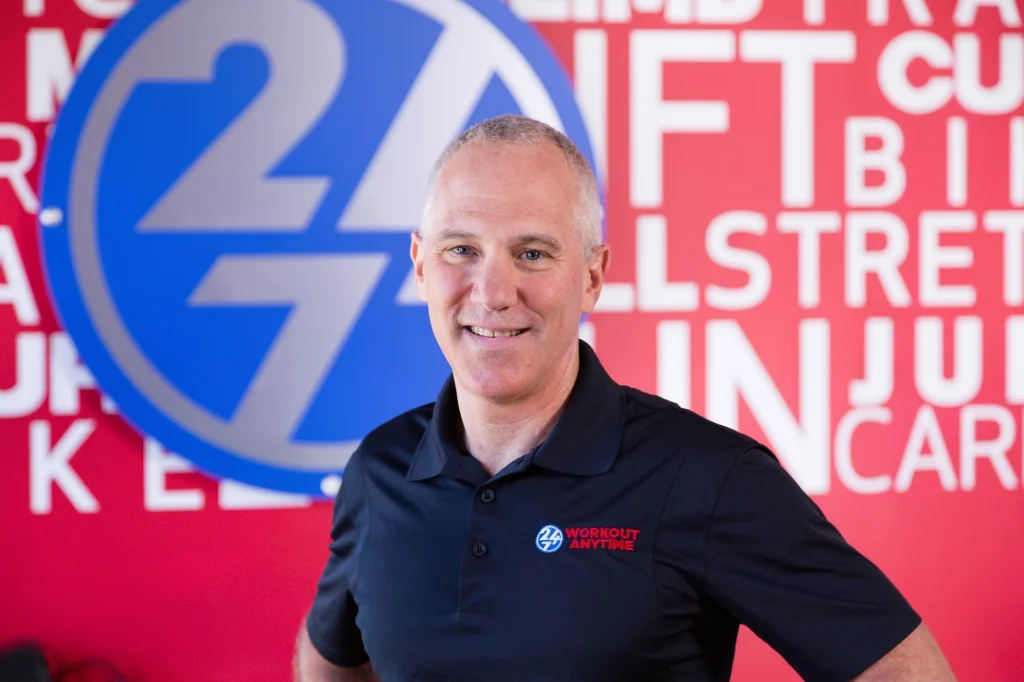
Wellness-Based Memberships Drive Incremental Revenue
But gyms don’t necessarily have to add new members to see economic gains from offering wellness amenities.
At its new locations, Workout Anytime is making the majority of its wellness and recovery amenities available under a premium membership plan, which carries a slightly higher monthly price tag than a traditional membership.
Higher-priced memberships mean more revenue per member, which is especially beneficial for gym owners in today’s tough economic climate, as soaring labor and real estate costs drag down profits.
“If you can get more dollars per head, the problem goes away,” Maurer notes. “What we’ve learned with these modalities is that absolutely is the case. In the clubs that really commit to this, particularly our new clubs that have a full-on premium wellness suite, they’re absolutely commanding a higher dollar amount and getting it, and that makes a world of difference in their bottom lines.”
Implementing Premium Wellness in a 24/7 Model
Adding wellness amenities across an established network of 200-plus 24/7 gym locations is a challenge, so Workout Anytime is taking a measured approach.
All newly built Workout Anytime clubs will feature a premium wellness suite, with franchise owners typically opting to include a wide array of amenities in their gyms, including infrared or traditional sauna, massage chairs and red light therapy.
At its legacy clubs, Workout Anytime is working with franchise owners to retrofit existing spaces to add some wellness amenities. While legacy clubs might not be able to offer their members access to each and every wellness option on the market today due to space constraints, it’s important that they get in the game, Maurer believes.
“When you have a retail brick-and-mortar model that’s as old as we are, 25 years old, guess what’s going to happen? It’s not going to look the same,” he says. “So we knew we had to make that adjustment, and we’ve made them to allow legacy clubs, which are typically a bit smaller than our current clubs being built, to add these features.”

(credit: Workout Anytime)
Many of the wellness modalities on offer at Workout Anytime require little to no staff oversight, so they can stay open 24 hours a day, in line with the gym’s normal operating hours.
Some modalities, like saunas and cold plunge, can’t be administered 24/7 since they require special oversight to ensure member safety; those amenities have restricted operating hours.
Carving a Niche in the Crowded Gym Market
The rise of wellness isn’t to say fitness isn’t important; on the contrary, it’s still the bread and butter of gyms across the world. Workout Anytime is no different.
On the fitness side, the brand has embraced the rise of strength training by adding more free weights and cutting back on cardio equipment. In particular, Workout Anytime announced that it will be adding an Ab & Glute Zone to all new locations as demand for training those body parts surges, especially among women.
“They’re absolute musts, particularly the glute zone,” Maurer says.
Down the line, Workout Anytime gyms could even feature equipment as innovative as virtual reality (VR) treadmills, Maurer shares.
While the gym landscape is highly competitive, Maurer believes Workout Anytime sits in a strategic position. Its gyms typically occupy a space of around 8,000 square feet (actual size can vary from location to location), making its average footprint bigger than brands like 24/7 gym rival Anytime Fitness but smaller and more intimate than big-box chains like Planet Fitness and Crunch Fitness.
The Atlanta-based brand has spread itself across the country with locations from Pennsylvania to Arizona, but the majority of its gyms are concentrated in the Southeast. True to its roots, Workout Anytime prides itself on a southern-hospitality approach to customer service, which it argues further differentiates its gyms from big-box chains.
“It’s the difference between walking into a Lowe’s or Home Depot and your local hardware store where they know your name and help you,” Maurer says.
The post Workout Anytime Goes All-In on Premium Wellness appeared first on Athletech News.
]]>The post Lululemon Leans into Member Perks appeared first on Athletech News.
]]>From experiential events to membership perks, brands are discovering that a little bit goes a long way in generating buzz and creating loyal customers — especially with Gen Z, who love wellness, a good deal, and an exclusive invite to a social-media-worthy event.
And athleisure giant Lululemon is paying attention, bolstering its complimentary membership program with special members–only perks in “move,” “fuel” and “restore” categories, which were announced last month on social media.
It’s the latest move from the brand designed to generate enthusiasm, having recently cut its full-year guidance due partly to slumping sales in the women’s category and a disastrous Breezethrough leggings launch that resulted in Lulu pulling the new leggings from the market to retool its design.
As part of its go-forward strategy, Lululemon CEO Calvin McDonald recently told investors that increasing brand awareness remains a priority, highlighting a successful and exclusive members-only weekend held at Peloton Studios in New York City earlier this summer, featuring live classes and a 5K run.
McDonald pointed to some of Lulu’s newest partnerships, noting that early feedback has been “very positive” for its member partner perks program, which sees Lululemon teaming with 12 brands to offer special discounts and offers.
“These strategies illustrate just a few of the ways we engage with our guests beyond a simple purchase transaction by offering exclusive experiences and benefits and helping them feel their best, all of which drives and deepens loyalty,” McDonald said.
A statement on the athleisure brand’s website explains that partners were carefully selected based on their ability to enhance members’ daily lives and offer products or services that support well-being.
Lululemon’s partner perks range from fitness to wellness and include a bevy of trendy, well-known brands:
- AG1 – 10 free travel packs, a welcome kit and a special All Day Essentials Belt Bag
- Barry’s – 10% off any single-class pack
- ClassPass – a free, one-month trial with 53 credits
- Erewhon – 15% off one order
- Hyperice – 20% off the Hypervolt Go 2, and 15% off all other products
- La La Land – 50% off the Lulu Latte
- Life Time – no specific deal is mentioned yet; for now, there is just an option to learn more about the premium fitness country club operator
- Methodology – 25% off your first order, and then 15% off orders
- Oura – six months of an Oura membership
- Peloton – 60 day free trial to Peloton App or App+
- Supergoop – 10% off on the first three orders
- Sweetgreen – $5 off the first purchase

Will Perks Pay Off?
Earlier this year, boutique fitness brand Solidcore announced Core Collective, a program that includes exclusive perks for members from brand partners such as Liquid I.V., Milk Makeup, Daily Harvest, Celsius, Care/of and Heyday.
24 Hour Fitness recently launched FitPerks, where members of the fitness chain can earn points from activities such as classes, coaching or check-ins on the 24 Hour Fitness app. The points can be redeemed for partner discounts on gym merchandise, local restaurants, concerts and sports tickets, hotels and resorts.
“We want to build as much motivation into using the gym as we possibly can and having an incentive structure is a great way to give that nudge we all need,” 24 Hour Fitness chief technology and digital officer Debbie Fiorella said. “Our members are at the heart of everything we do, and this program is designed to reward them for their hard work and commitment towards their fitness goals.”
High-value, low-priced (HVLP) fitness chain Crunch Fitness has also developed an extensive perks program for its members across a variety of categories. Meanwhile, Planet Fitness continues to add to its members-only deals with its PF Perks Program. The fitness franchisor returned its PerksFest earlier this summer with deals for Headspace, Crocs, Garmin, GNC and more.
New Planet Fitness CEO Colleen Keating referenced the perks program and its ongoing success during the fitness franchisor’s Q2 earnings call last month.
“One of the other things, I think, that’s relevant in the hospitality background versus what we’re endeavoring to do at Planet Fitness is the opportunity to extend the experience outside the four walls of the club through our app, through loyalty programs and partnerships and even our perks program,” Keating said. “We just had a great month in June with perks utilization. So, there’s an opportunity for us to really leverage our very broad membership base and our high app utilization through partnerships and bringing additional offerings to our members that they value even outside the four walls of the gym.”
Member discounts aren’t reserved just for cost-sensitive consumers – last year, Equinox unveiled a new-level membership program, Equinox Circle, offering deals on helicopter commutes, a dedicated concierge for purchasing luxury watches and more.
The post Lululemon Leans into Member Perks appeared first on Athletech News.
]]>The post Inside Retro Fitness’ Plan To Take Over the HVLP Gym Market appeared first on Athletech News.
]]>The world’s biggest companies often do two important things: create a strong brand ethos and execute on a rock-solid business plan.
Retro Fitness is confident it’s ticking both those boxes. Under CEO Andrew Alfano, the high-value, low-price (HVLP) gym brand has poured resources into a massive rebranding effort and bolstered its franchise operations with best-in-class leadership.
A former Starbucks executive who helped build the once-fledgling coffee brand into a worldwide behemoth, Alfano now believes Retro Fitness is the next big thing.
“This is hands down, minimally, a 1,000-club system domestically, and we have international aspirations,” Alfano tells Athletech News. “We’re actively looking for capital partners to take this journey with us.”
Retro Fitness currently has around 200 locations open or in development, and it’s seen encouraging signs that it can deliver on Alfano’s lofty vision, including getting buy-in from one of the world’s largest investment firms.
The Rebirth of a Brand
Founded by fitness and wellness entrepreneur Eric Casaburi in 2004, Retro Fitness quickly built up a large following in its home state of New Jersey, surrounding states in the Northeast and Florida.
The big-box gym brand became known for its punchy red-and-yellow color scheme, tanning services and a wide array of fitness equipment, all at a low price.
Alfano, who took over as CEO in 2019, felt it was time for a change.
“Even McDonald’s doesn’t use red and yellow anymore,” Alfano noted, alluding to the need for brands to sometimes pivot away from once-successful marketing tactics. “When was the last time you saw Ronald?”
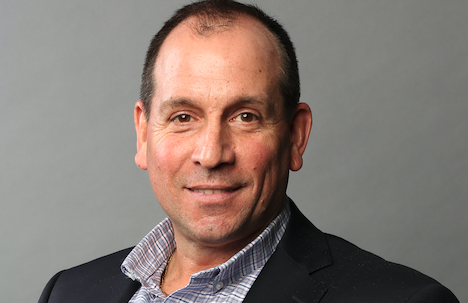
Under Alfano’s watch, Retro Fitness has embarked on a full-scale rebrand, moving away from red and yellow as dominant colors in favor of a more minimalist, modern aesthetic.
Beyond the toned-down color palette, newly opened Retro Fitness clubs are modern in every sense, featuring communal-gathering spaces, nice furniture and large, turf-filled functional training areas.
“When old gyms were built, the first thing you did was walk up to the check-in counter, which is very uninviting,” Alfano explains. “When you walk into our clubs, the very first thing you’re going to see is an open-air, inviting community area where you can sit and get some email done or drink a smoothie with friends.”

Retro Fitness’ newly built clubs all feature the rebranded vibe while older clubs are gradually incorporating parts of the rebrand into their existing facilities.
There are early signs that the new branding is attracting new customers, namely women. Before the rebrand, membership at a typical Retro Fitness gym skewed around 66% male. At the redesigned clubs, female members make up around 50% of gym-goers, according to the brand.
“If you want to be competitive, you need to be appealing to as many people in your community as possible,” Alfano says of the rebrand.

Brand Building: Taking a Page From Starbucks
Retro Fitness’ rebranding efforts extend beyond the physical look and feel of its clubs.
“Coming from a company like Starbucks, I really came at this from a perspective of consumer engagement with a brand, not just joining a gym,” Alfano says.
To drive consumer engagement, the brand has sought to tie Retro Fitness into all aspects of living a healthy lifestyle, from lifting weights and doing cardio to much, much more.
Inside the gym, members can recover from their workouts with cutting-edge wellness modalities like red light therapy along with traditional favorites like massage chairs and tanning beds.
Equally important, according to Alfano, is what happens when members leave the club. To stay top of mind, Retro Fitness offers an array of content through its app including healthy cooking classes as well as nutrition, mental wellness and music content.
“It can’t simply be our weights against your weights or our cardio against your cardio,” Alfano explains, noting how hard it is for gyms to differentiate themselves that way. “So we really build a community inside the four walls of our club, and more importantly, we become a fabric of the community outside the four walls.”
Creating Community: Inside Project Lift
Central to Retro Fitness’ community-building strategy is Project Lift, an initiative that could change the face of America’s gym landscape if all goes according to plan.
Announced in 2022, Project Lift will see Retro Fitness and its investor partners potentially open hundreds of gyms in predominantly Black and Brown communities across America.
Alfano says Retro’s leadership team got the idea for Project Lift after understanding the disproportionate impact the COVID-19 pandemic was having on Black and Brown communities, who suffered from pre-existing conditions like obesity at higher rates than other groups of Americans, and were thus more susceptible to harm and death from the virus.

From the outside looking in, a Project Lift club looks like any other Retro Fitness location, but the economics are a bit different. At Project Lift clubs, Retro Fitness waives the franchise fee and also donates a portion of its royalties as franchisor to a local community organization for the life of the gym business.
Notably, Project Lift gyms are open for free to the entire community on Friday nights, giving non-members a chance to improve their fitness and wellness.
Last year, the BlackRock Impact Opportunities Fund signed on to open at least 80 and as many as 100 Project Lift gyms across Dallas-Fort Worth, Houston, Southeast Florida and Queens/Long Island, New York.
“Our goal is 500 Project Lift locations in 50 cities over the next five years,” Alfano declares. “That may sound significant, but when you think about what BlackRock has committed to, 80 with aspirations of doing 100, we really (only) need four more (investors).”
Franchising Fundamentals: Best-In-Class Support
On the business side, Retro recently brought on franchising and licensing vet Larry Strain to serve as its chief development officer.
Like Alfano, Strain is a former Starbucks executive who played a key role in the coffee brand’s early growth. He also has experience scaling brands including McDonald’s, Dunkin’, and Potbelly Sandwich Shop, among others.
“I don’t know any franchisor in the world today that’s providing the level of support services that Retro Fitness is providing,” Strain says of Retro’s hands-on approach to franchising, calling it a “turnkey” solution for franchisees.
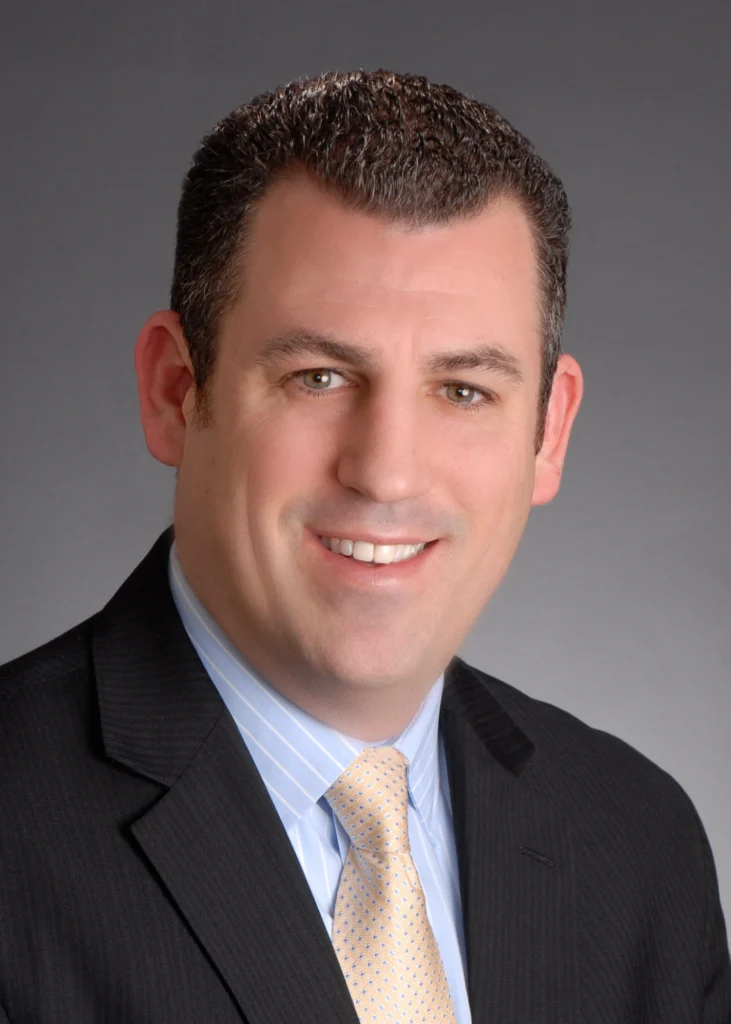
“It’s not only disruptive to the fitness industry; it’s disruptive to the entire franchise industry,” he adds.
According to Strain, Retro Fitness offers a robust suite of development services for multi-unit franchise partners including managing broker relationships in-house, handling market analytics and site selection, offering in-house design services and overseeing construction for new clubs.
Once a lease is signed, the support continues: Retro’s corporate office assigns franchise business coaches who work with franchise owners in the early stages of getting their clubs up and running, including extensive pre-sale support along with support in hiring and training staff.
Boutiques Beware? The Case for HVLP Gym Domination
It’s worth noting that Retro Fitness isn’t the only HVLP gym brand to be plotting aggressive expansion, so it’s got some competition.
Crunch Fitness is nearing 500 locations, opening new clubs at a rapid clip, while brands like EoS Fitness and Vasa Fitness are also putting up impressive numbers as of late. And that’s to say nothing of HVLP giant Planet Fitness, which continues to win with Gen Z as it closes in on 20 million members.
Still, despite the seemingly saturated nature of the low-price gym market, Strain believes there’s a ton of white space for certain HVLP brands to open even more locations, provided they go after the right types of consumers.
“The Planet Fitnesses of the world have done extremely well and have really maxed out on their audience that they have marketed themselves to and defined their brand toward,” he explains. “But there’s a large middle- and upper-middle-class group of people out there whose only access to fitness today is through a boutique offering such as an Orangetheory or CycleBar.”
HVLP gym brands in the vein of Retro Fitness can step in and take over, Strain says, since they’re able to provide the benefits of a boutique fitness offering – small group classes and a premium feel – while also offering a larger selection of equipment, access to diverse wellness modalities and a host of other amenities.
“We have an ability to go into those markets that are inundated by boutiques and take that market share away relatively easily,” Strain believes.

For Alfano, there’s no better horse to back in the great HVLP race than a renewed, re-energized Retro Fitness.
“If you’re going to be in fitness you want to be in high-value, low-price fitness, for a lot of reasons,” the Retro Fitness CEO says. “And if you are going to be in high-value, low-price, we’re the darling of the street right now.”
The post Inside Retro Fitness’ Plan To Take Over the HVLP Gym Market appeared first on Athletech News.
]]>The post Planet Fitness Reports Strong Q2, Charts Next Chapter Under New CEO appeared first on Athletech News.
]]>Planet Fitness, now at the halfway point of a transition year that includes new leadership and updated basic membership pricing, reported Q2 results reflecting a 5.1% revenue increase to $300.9 million (up from $286.5 million) and a $1.2 billion boost in system-wide sales (up from $1.1 billion) when compared to the prior year period.
The “Judgement Free Zone” fitness operator opened 18 new Planet Fitness stores in Q2, consisting of 17 franchisee-owned stores and one corporate-owned, bringing its total store count to 2,617 at the close of June.
Looking ahead for the remainder of 2024, Planet Fitness reaffirmed new equipment plans for approximately 120 to 130 franchisee-owned locations and system-wide new store openings of roughly 140 to 150. The franchisor’s financial outlook follows a similar trend, reiterating its expectations of revenue to increase in the 4% to 6% range and system-wide same store sales in the 3% to 5% range.
“Since I stepped into the CEO role in June, I have become even more confident and excited about my decision to join such an iconic brand, supported by a strong foundation and team, a solid base of approximately 100 franchisees, and approximately 19.7 million members,” Planet Fitness CEO Colleen Keating said, adding that the high-value, low-price (HVLP) franchisor refinanced a portion of its debt and entered a $280 million accelerated share repurchase program in the second quarter.
Keating replaces former CEO Craig Benson, who filled in following Chris Rondeau’s unexpected ousting last September.

On Tuesday’s earnings call with investors, Keating outlined her vision for Planet Fitness, stating that since taking her post in early June, she’s “hit the ground running,” and visited over a dozen clubs across six states plus Spain.
Notably, she believes Planet Fitness can double its domestic footprint to approximately 5,000 locations, surpassing the 4,000 location target it had during its 2015 IPO.
Planet Fitness Breaks Ground in Europe
On the international front, with Planet Fitness opening its first European club in Barcelona, Keating is confident that the franchisor has ample opportunity to make its mark abroad, especially after visiting several other fitness brands operating in Spain.
“We have a highly differentiated offering and tremendous runway to grow to real scale and density in the Spanish market, where today, only roughly 10% of the population belongs to a gym,” she told investors.
Earlier this year, Planet Fitness announced its plans to open 300 locations in Spain and explore other opportunities in the European market — plans that aren’t unique to the big box operator, as Basic-Fit, Europe’s top-performing HVLP gym chain, plots to rebrand over 40 recently acquired McFit clubs in Spain and bolster its footprint. VivaGym, a budget-conscious Iberian gym operator, is also eyeing the burgeoning European fitness market with ambitions to grow to 190 centers following a deal with Providence Equity Partners.
“What we’re not about is flag planting,” Keating affirmed. “What we are about is getting to real scale, identifying markets where we believe we can get to real scale and real density. And that is the case with Spain.”
Emphasizing the “High Value” of HVLP
Brand messaging will also get an overhaul under Keating, which she says will focus on the “high value” aspect of the HVLP model as it looks to attract new members, particularly Gen Z, who make up the majority of PF’s net new joins each quarter. The updated messaging will roll out later this year and continue into Q1 2025.
“We’re seeing Gen Zs as the fastest-growing segment of our member population,” she added.
The decision to zero in on messaging follows Benson’s critique of Planet’s past lackluster advertising campaign that he said contributed to lower net joins in Q1, telling investors in May that the campaign (and its lack of price-pointed offers) didn’t resonate as broadly as Planet Fitness had anticipated.
Although she didn’t reveal any specifics, Keating alluded to in-club elements that will emerge in late Q4 and early Q1 and signal Planet’s modernization and brand evolution, as well as the continued review of low-cost amenities for both classic card members and Black Card holders.
The fitness franchisor is also on the hunt for a chief development officer and chief marketing officer while it continues to search for a chief financial officer to replace CFO Tom Fitzgerald, who will retire at the end of the year.
Black Card Pricing Undergoes Price Tests
Planet’s new Classic card member price increase (now $15 per month for new members, up from its longstanding $10 pricing) took effect June 28 — a move Keating says will positively impact new Planet Fitness gyms in particular. While the price increase took effect right before the end of the second quarter, it has garnered support from analysts who say the price hike bodes well for the big box gym giant and the fitness industry as a whole.
“We expect that after one year of the price being in effect, existing stores will see a low- to mid-single-digit percentage increase to AUVs, with an even greater impact to new stores as the majority of their classic card members will be paying $15,” Keating said.
Now that the new base membership is in effect for new members (current Classic card members maintain a $10 per month “price for life”), Planet Fitness is turning its attention to two Black Card pricing tests (set at $27.99 and $29.99) which are being conducted in select markets and will run possibly into Q4.
Currently, over 60% of members join as Black Card members ($24.99) to access amenities such as massage chairs, HydroMassage beds, tanning and red light therapy booths—a percentage that analysts predict will increase, considering the pricing gap has been narrowed compared to the $15 basic membership price.
Fitzgerald reflected on the relatively soft past January in terms of new member growth, citing lingering “noise” over COVID and seasonal illnesses and the widely-covered locker room incident. Despite the unplanned bumps in the road, he indicated that Planet’s momentum has put the franchisor on a positive growth path for the remainder of 2024 and early next year.
“We were just talking to some of our big franchisees recently. They’re happy with how all that played out and how the team handled it,” Fitzgerald said of the challenges earlier this year. “But those two things really impacted our membership levels compared to where we thought. But I think we have the time now to gear up for the back half of the year, particularly December leading into January and cranking up for what should be a great Q1.”
The post Planet Fitness Reports Strong Q2, Charts Next Chapter Under New CEO appeared first on Athletech News.
]]>The post Planet Fitness Opens First Gym in Spain, More Planned appeared first on Athletech News.
]]>Big box gym giant Planet Fitness has broken ground in Spain, opening its first club in Sabadell as part of its strategic growth plan in Europe.
The popular high-value, low-price (HVLP) fitness franchise confirms that the first stores will be a joint venture with a franchisee partner, while the remainder of the market will be franchised.
Earlier this year, Planet Fitness executives announced plans to open 300 locations in Spain, using the experience as a springboard to explore other European markets. Planet’s expansion into Spain follows its widespread presence in all U.S. states as well as Puerto Rico, Canada, Panama, Mexico and Australia.
“Today, only 10% of the Spanish population has a gym membership so this is an incredible opportunity to bring our brand and unique model to Europe,” said new Planet Fitness CEO Colleen Keating. “At Planet Fitness, we are proud to provide a high-value, affordable fitness experience where people don’t feel intimidated to start their fitness journey. We believe our Judgement Free environment will resonate in Spain and beyond as we continue to strategically grow our footprint globally.”
Keating added that Planet Fitness is leveraging its strong balance sheet to drive growth at a faster pace and demonstrate proof of concept in new markets.
The ‘Judgement Free’ fitness brand is in the middle of a self-proclaimed transition year, one that includes a $5 price hike for its basic membership, which Planet Fitness increased to $15 per month, up from its long-running $10 price tag. Analysts say the move could bring a slew of benefits, including increased member retention and a boost in premium membership sign-ups.
Vicente Bañobre, who is leading Planet’s operations and expansion in Spain, noted the strong growth potential in the country for the fitness franchise.
“We’re thrilled to offer an affordable fitness solution and best-in-class member experience to the Sabadell community,” Bañobre said.
The post Planet Fitness Opens First Gym in Spain, More Planned appeared first on Athletech News.
]]>